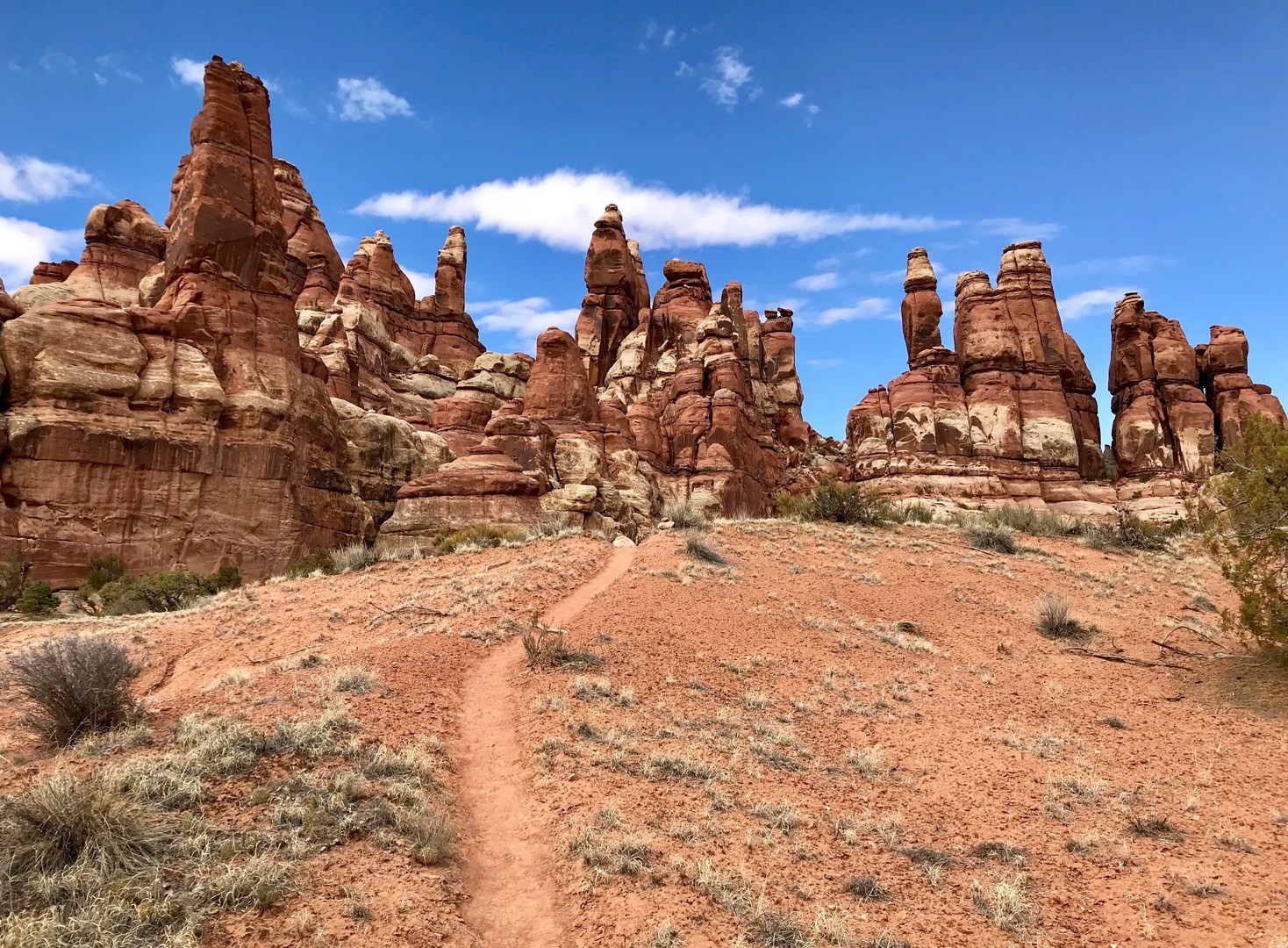There was an episode of the television show Myth Busters that showed just how difficult it is to find a needle in a haystack. The show’s scientific geniuses developed an elaborate process to prove that it is possible to find this tiny finger-poking weapon of sewing torture in a giant pile of hive-inducing horse delicacy.
I found a needle in the middle of the desert in Utah. Actually several of them, and all it took was Google Earth.
Visiting the desert has become my springtime routine. It’s a chance to leave the snow-packed Colorado mountains and the stress of life in the exploding Denver metropolis behind. It was a trip to the Grand Canyon 22 years ago where I first experienced the grandiose beauty of the colorful desert for the first time, and the more time I spend in this stunning, wild, and unforgiving place, the more my love for it grows.
I’m an introvert though, and I work in a very extrovert-dominant environment. The last thing I want to do on my days off is be around a thousand tourists in a park. I need the silence and solitude that only the wilderness can provide to get re-energized. Have you been to the desert lately, though? Good luck finding solitude in a national park in the desert during spring, especially Utah’s national parks! Or so I thought...
If you’re like me, you spend an unhealthy amount of time on Google Earth. Google Earth can take you places and show you things you may otherwise never see, including needles in the Utah desert.
These needles aren’t silver though, and they’re not made of metal. They’re brilliant shades of red, brown, and tan. They’re made of extravagant layers of uniquely textured rock that have been artistically carved into masterpieces by erosion and the howling desert wind.
The irony is that this environment reminded me of some of the landscapes around our home in Colorado, especially one of my favorites: Roxborough State Park. Desert sand, red clays, various dark green pine trees, and interesting rock formations all created different ecosystem zones within The Needles district of Canyonlands National Park.
I’m always trying to go places few people have been to, and this trip was no different. The clearly worn trails in The Needles give way to scattered cairns that lead the way up glorious slickrock formations with towering amphitheaters overhead.
Most people people seem to only be comfortable with a limited amount of exploration. Once the familiarity of a trail vanishes or some route finding is required, people tend to stop moving forward. If we had stopped at that point, as the handful of other people did this day, we would have missed the most spectacular part of the trip.
As we looked around we found cairns that lead us up to a tunnel between massive rocks. We had to walk across petrified logs jammed into a crack to get into this unexpected hideaway.
Our excitement grew because we were blinded by the brilliant light that glowed ahead. As we climbed down the ladder carved out of a tree on the other side we were rewarded with the awe-inspiring view of Squaw Creek Canyon and Elephant Canyon. Here colorful limestone, sandstone, siltstone, and shale combine to create the Halgaito Shale/Elephant Canyon formation, which supports these steep canyon walls.
We sat here alone, miles away from civilization. I feel safer in these remote, wild places surrounded by the unpredictable wilderness than when I am surrounded by the unpredictable people in the city. The outrageous views of these canyons that were splattered with quixotic and colorful rock formations, hidden caves and slot canyons, and the deafening silence all made me feel safer than I had felt in weeks.
It’s ironic how loud silence is, and how comforting the wilderness can be. So, next time, take a few more steps on that path you’re on and see what you can find.





Comments
Sign In and share them.